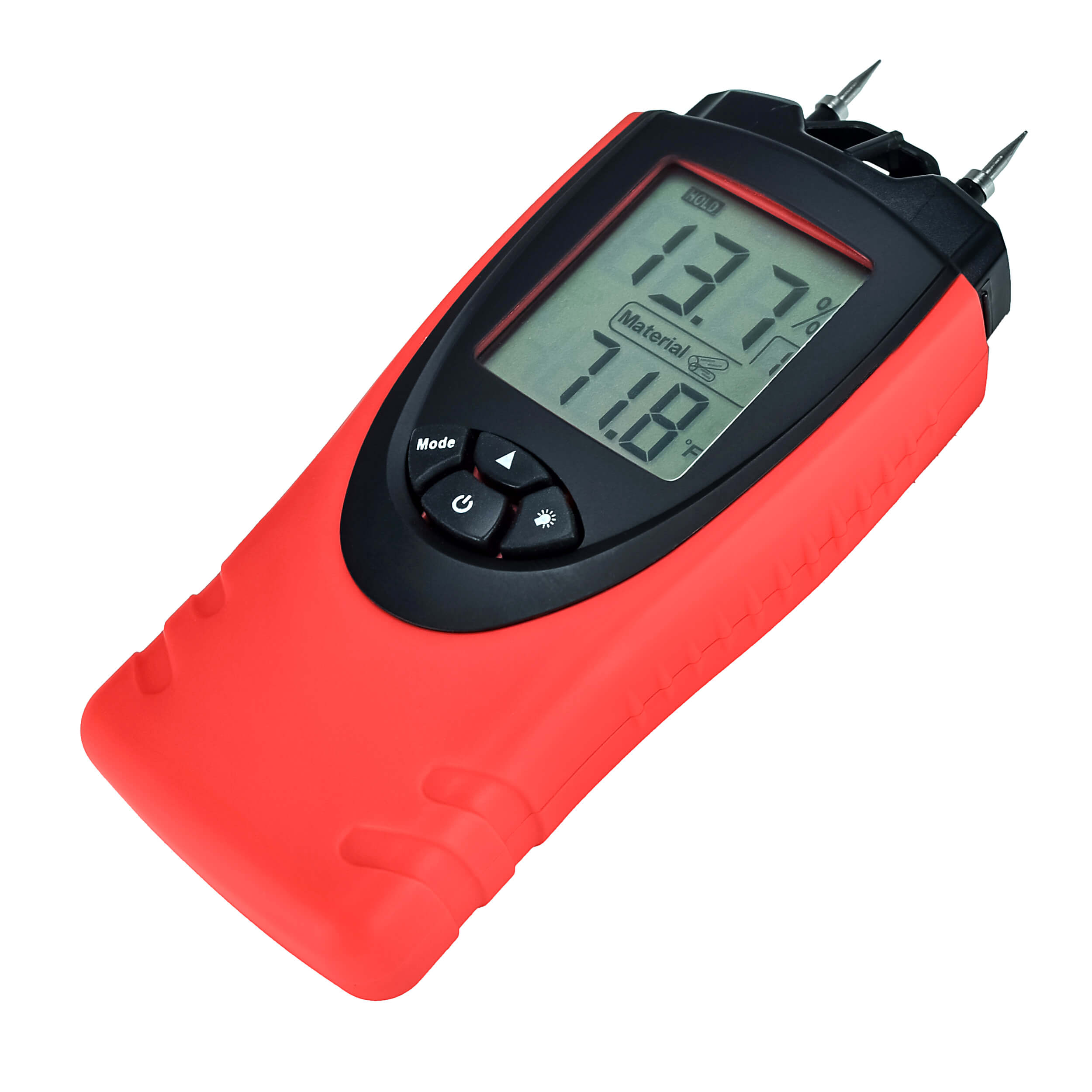The Ultimate Guide to Choosing the Right Moisture Meter for Your Requirements
Wiki Article
Explore the World of Moisture Meters: Everything You Required to Know
In the world of dampness meters lies a world of precision and usefulness that usually goes undetected. Comprehending how moisture meters operate, the various types offered, and their diverse usages can shed light on their relevance in guaranteeing quality and effectiveness.Just How Moisture Meters Work
Moisture meters run by gauging the electric conductivity or capacitance of products to identify the wetness web content present. These meters are very useful tools across different industries, consisting of construction, woodworking, and farming. By utilizing different techniques such as pin-type or pinless modern technology, wetness meters give exact readings that help experts make notified choices.
Pin-type dampness meters function by inserting the sharp pins into the material being evaluated. The electrical conductivity between the pins is then determined, with greater wetness degrees bring about increased conductivity. Moisture Meter. On the other hand, pinless moisture meters utilize electro-magnetic signals to check a bigger area without triggering any type of damage to the material's surface. These meters are suitable for promptly analyzing dampness degrees in huge areas or finished products.
Despite the method used, moisture meters play an essential function in stopping issues such as mold development, architectural damage, or item issues triggered by excess wetness. Comprehending how these meters job is crucial for making certain the high quality and integrity of products in different applications.
Kinds Of Moisture Meters
Given the essential function moisture meters play in numerous sectors, it is important to comprehend the different kinds offered to experts for precisely assessing dampness degrees - Moisture Meter. There are mostly two main types of dampness meters: pinless and pin-type wetness meters

On the other hand, pinless moisture meters utilize electromagnetic sensing unit plates to scan a bigger location of the material without creating any type of damage. This kind is appropriate for quickly scanning huge areas and is typically made use of for floor covering, walls, and ceilings. Pinless meters are hassle-free for taking readings on completed surfaces without leaving any kind of noticeable marks.
Both kinds of moisture meters have their benefits and are selected based on the details demands of the task at hand. Recognizing the distinctions in between these types is essential for specialists to make precise moisture analyses.
Applications Across Industries
Construction professionals depend on wetness meters to assess the moisture degrees in building products like concrete, drywall, and timber, which is important for preserving architectural integrity and preventing issues like rot or mold and mildew. The flooring industry uses moisture meters to measure the dampness material in subfloors before installing numerous flooring coverings, protecting against pricey problems due to excess moisture. In the food sector, moisture meters are made use of to check and manage moisture degrees in products such as grains, nuts, and dried out fruits to maintain quality and top quality.Tips for Utilizing Moisture Meters
Use the wetness meter's calibration setups to guarantee precise analyses when measuring the dampness content in numerous materials. In addition, make certain the meter is established to the proper moisture variety for the product you are measuring to acquire the most specific results.When using a pin-type moisture meter, put the pins to the suitable deepness advised for the product being examined. This guarantees that the wetness readings are drawn from the right depth within the material, supplying a much more precise depiction of its dampness web content. For pinless dampness meters, bear in mind to keep correct call with the material's surface to get reliable readings.
Consistently inspect and change the batteries in your moisture meter to avoid incorrect analyses as a result of reduced power. When not in use to lengthen its lifespan and maintain its precision, Shop the meter in a risk-free and completely dry area. By following these suggestions, you can make the most of the efficiency of your moisture meter and get accurate wetness content measurements throughout different materials.
Maintenance and Calibration
To make sure the accuracy of dampness material measurements, normal maintenance and calibration of the dampness meter are necessary steps in its appropriate functioning. Maintenance involves maintaining the dampness meter free and clean from debris that could affect its analyses. It is necessary to follow the producer's original site standards for cleansing to avoid damage to the gadget. Furthermore, routine calibration is essential to confirm the accuracy of the analyses. Calibration changes the moisture meter to guarantee that it gives trustworthy and consistent results.Calibration needs to be performed regularly, particularly if the wetness meter is made use of often or in critical applications where accurate dimensions are called for. Lots of dampness meters include calibration devices or can be adjusted by expert services. Moisture Meter. It is advised to maintain a log of calibration dates and results to track the efficiency of the wetness meter with time. By adjusting the moisture and maintaining meter routinely, customers can rely on the accuracy of the moisture web content measurements acquired.
Conclusion

In conclusion, dampness meters play a critical duty in numerous markets by properly gauging the dampness material of products. Understanding exactly how these tools function, the different types offered, and appropriate maintenance and calibration are crucial for getting reliable browse around these guys outcomes. Whether in building, agriculture, or manufacturing, the usage of moisture meters helps ensure quality control and performance in procedures.

In conclusion, wetness meters play a critical function in different sectors by precisely determining the dampness web content of products.
Report this wiki page